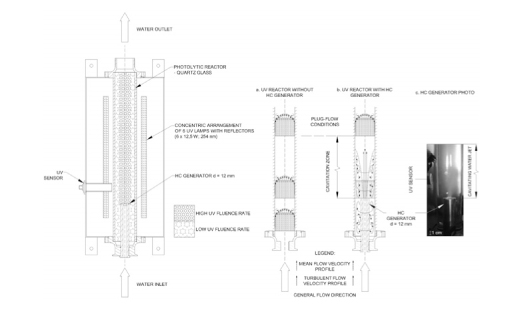The Enhancement of H2O2/UV AOPs for the Removal of Selected Organic Pollutants from Drinking Water with Hydrodynamic Cavitation
DOI:
https://doi.org/10.17344/acsi.2016.2759Keywords:
Advanced oxidation, Dissolved Organic Carbon, Hydrogen peroxide, Hydrodynamic cavitation, Methylene Blue, UltravioletAbstract
Drinking water contains organic matter that occasionally needs to be treated to assure its sufficient quality and safety for the consumers. H2O2 and UV advanced oxidation processes (H2O2/UV AOPs) were combined with hydrodynamic cavitation (HC) to assess the effects on the removal of selected organic pollutants. Water samples containing humic acid, methylene blue dye and micropollutants (metaldehyde, diatrizoic acid, iohexol) were treated first by H2O2 (dosages from 1 to 12 mg L-1) and UV (dosages from 300 to 2800 mJ cm-2) AOPs alone and later in combination with HC, generated by nozzles and orifice plates (4, 8, 18 orifices). Using HC, the removal of humic acid was enhanced by 5-15 %, methylene blue by 5-20 % and metaldehyde by approx. 10 %. Under favouring conditions, i.e. high UV absorbance of the matrix (more than 0.050 cm-1 at a wavelength of 254 nm) and a high pollutant to oxidants ratio, HC was found to improve the hydrodynamic conditions in the photolytic reactor, to improve the subjection of the H2O2 to the UV fluence rate distribution and to enhance the removal of the tested organic pollutants, thus showing promising potential of further research in this field.
Downloads
Additional Files
Published
12.10.2016
Issue
Section
Chemical, biochemical and environmental engineering
License
Except where otherwise noted, articles in this journal are published under the Creative Commons Attribution 4.0 International License
